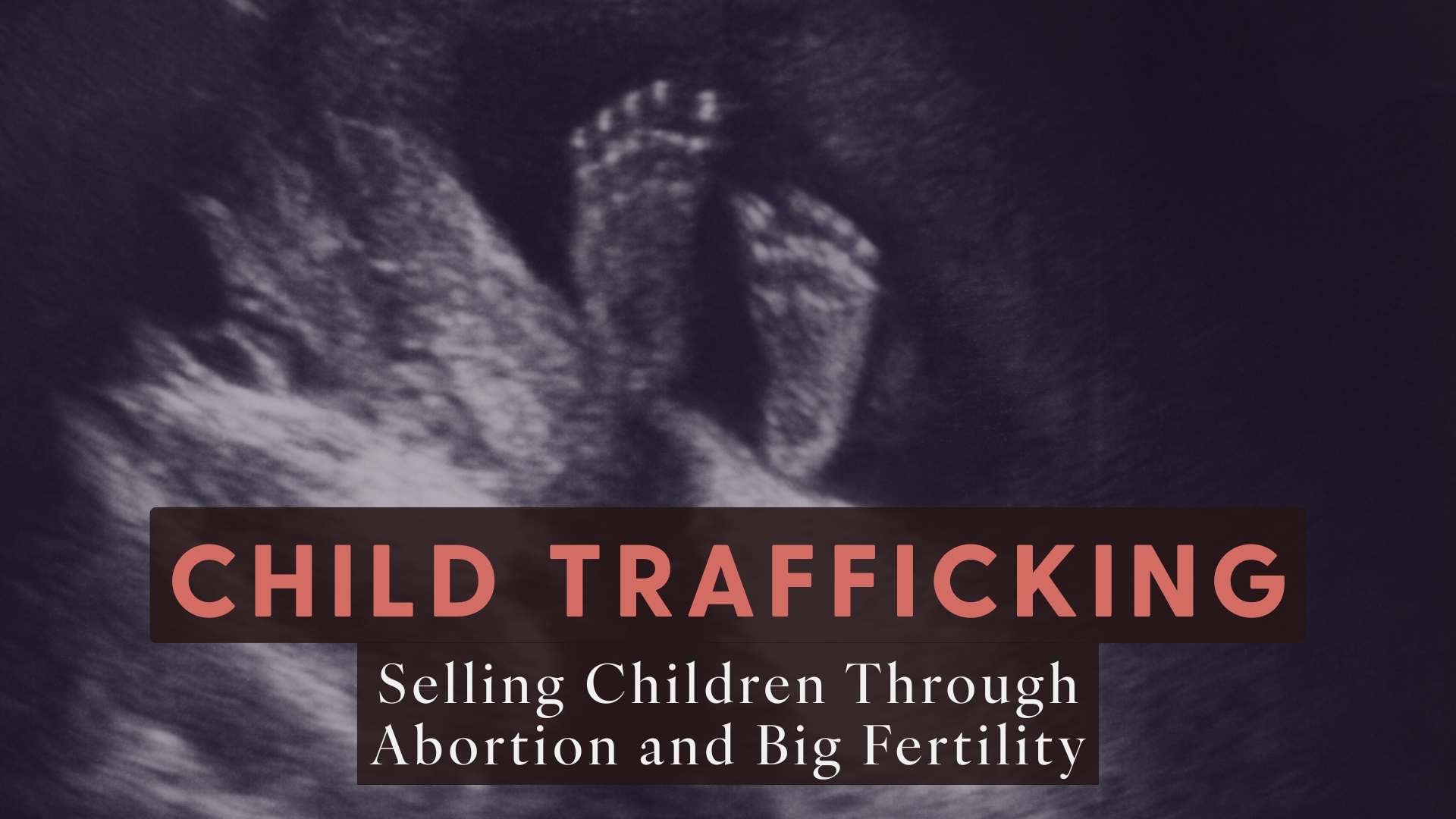I recently attended a pro-life event in Boulder, Colorado – a city notorious for late-term abortions. The event was held at a local Catholic church, which hosted a graveyard dedicated to the fetal remains of children aborted at a local abortion clinic. The memorial site was lined with sentiments of parents struggling with post-abortive guilt, giving them a chance to grieve their loss. The sight was harrowing, to say the least. The whole experience, however, made me question what happens to the remains of aborted fetuses. Are they thrown away?
Upon further research, it seems that the answer is far darker than I realized.
What is Child Trafficking?
According to the UNICEF, “child trafficking” involves recruiting, transporting, transferring, harboring or receiving children for the purpose of child exploitation. You may think of “sex trafficking” or “child labor” when you hear the term “child trafficking,” but some would argue that the term also encompasses the lesser-known utilization of babies destroyed through abortion, and the big fertility industry.
Aborted fetal cells are used for a wide array of reasons, including flavor development, electricity, and even skin care. Various systems available through big fertility, such as preimplantation genetic testing (PGT) and surrogacy, also allow people to create and harbor the most desirable children. Not to mention, there is a long-standing relationship between the abortion industry and child sex slaves as a means of pimps covering their crimes.
While it may seem like “child trafficking” is more common in developing countries with less child protection laws, the reality is that children are exploited under the guise of “reproductive rights” in our own backyards.
Aborted Babies and The Law
In order to accurately explain the reality of child trafficking in the abortion and big fertility industries, a legal comprehension of laws surrounding these issues is necessary. First and foremost, the United States Trafficking Victims Protection Act (TVPA) establishes child trafficking as a federal crime, including both labor and sex trafficking, but only for children outside of the womb. Children inside the womb are not granted the same rights or protection.
Currently, U.S. law allows fetal tissue (from elective abortion, miscarriage, or stillbirth) to be utilized for research, which includes:
- Primary or secondary fetal cell cultures, which are lab-grown cells originally taken from aborted babies, kept alive and replicated for ongoing experiments.
- Derivatives such as protein, RNA, or DNA extracts.
- Animal models (e.g., “humanized mice”)
- Placentas, cord blood, amniotic fluid, chorionic villi obtained via elective abortion.
In other words, dead children are harvested and exploited for “research” purposes. Sounds strangely synonymous with child trafficking, doesn’t it?
It is also worth noting that federal law prohibits buying, selling, or receiving fetal tissue for profit. Additionally, a woman must consent to donating her preborn child’s body for research. The abortion industry, however, has notoriously exploited loopholes in these already insufficient laws to receive a profit from the bodies of aborted children. This ongoing abuse of the system blurs the line between legitimate science and child trafficking.
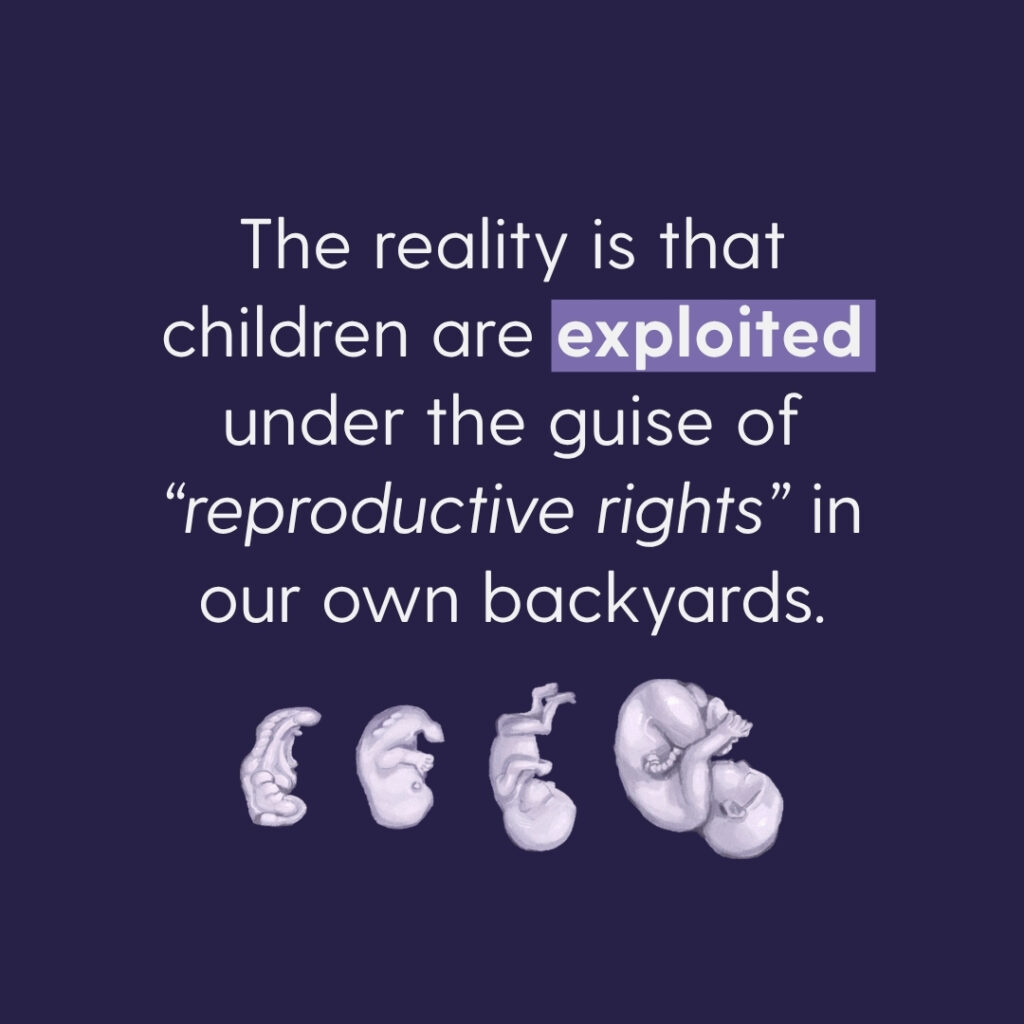
Child Trafficking: Aborted Fetuses in Everyday Items
When you hear the term “research,” you may immediately think of more scientific, less pedestrian projects. While it’s true that aborted fetuses have been used in developing things like vaccines and stem cell therapies, it’s also true that fetal tissue has been harvested for the creation and testing of everyday products — the kind you might find in your refrigerator or medicine cabinet.
Food and Drink
Mm – nothing beats the sweetness of a crisp, cold Pepsi on a sunny day. As you immerse yourself into a carbonated oasis of flavors like caramel, vanilla, and notes of citrus, you may ask yourself, “how do they get these to taste so good?” The answer may lie in the embryonic kidney cells of an aborted fetus.
Yes, you read that correctly. While aborted babies are not an ingredient in our food per se, their cells have been used in the process of enhancing flavor. The American biotech company, “Senomyx,” developed novel flavor and aroma enhancing ingredients through an aborted fetal cell line called HEK 293 (Human Embryonic Kidney 293) which was derived from a dead, preborn child’s kidney in the 70’s. In what they call a “robotic tasting system,” Senomyx used HEK 293-derived taste receptor proteins to test flavor reactions and identify which compounds warranted further research. In other words, they made artificial taste buds from an aborted fetus to help aid flavor enhancement.
Now acquired by the Swiss flavor company “Firmenich,” Senomyx has previously had partnerships with Kraft foods, Nestle, Coca-Cola, and yes, PepsiCo. Following backlash from pro-life groups, many companies cut ties with Senomyx, but the company still operates and legally uses HEK 293 cells in flavor development. Although many of these companies have claimed they didn’t use fetal cells to help develop their flavors, they likely received data from HEK-293 studies through their partnerships with Senomyx. This is one of the finest forms of child trafficking – utilizing the body of a nonconsenting child for selfish ambition, including flavor development.
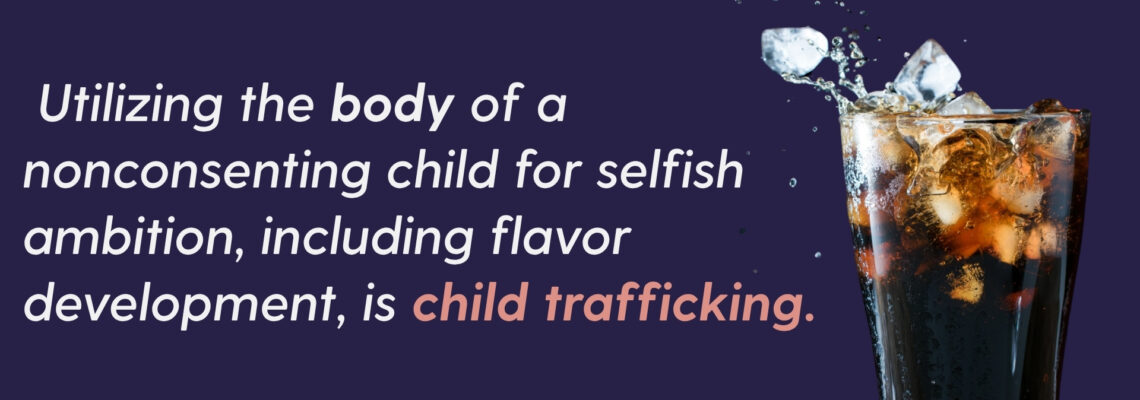
Skin Care
Turns out, kids keep you young – and your skin supple. Processed skin proteins (PSP) acquired from a cell line developed from the tissue of an elective aborted baby donated to the University of Lausanne can be found in a variety of moisturizers, serums, eye creams, and more. Namely, the Swiss bio-pharmaceutical company “Neocutis” uses PSP as a main ingredient in many of their skincare products, celebrating its blend of human growth factors and effectiveness in treating aging, discoloration, dryness, and uneven skin texture. In their own words (this is a screenshot from their website):

For just a few dozen dollars, you too can erase your wrinkles through the rejuvenating properties of an aborted baby. But hey, at least they don’t test on animals.
Electricity
The mitochondria is the powerhouse of the cell – and aborted babies are the powerhouse of our homes. Back in 2014, a NBC article titled “Fetal Tissue Used to Generate Electricity in Oregon,” exposed a local incinerator who was routinely burning aborted babies to generate electricity for the town. This sparked public outrage, exposing the very real waste-to-energy process happening worldwide.

Aborted fetal tissue and other kinds of medical waste are commonly used to generate heat and electricity. The process works like this: waste-to-energy plants burn medical waste, including aborted babies, to produce steam, which helps operate turbines to generate electricity. This energy is then sold to utilities for power.
In the 2014 Oregon case, the Convanta Marion waste to energy facility burned aborted babies, among other medical waste, to generate electricity that was then sold to Portland General Electric and inserted to the regional power grid. This grid helped power homes, schools, businesses, hospitals, and more.
While this Oregon plant no longer accepts aborted fetuses, this waste-to-energy practice is not extinct as there is currently no federal law that prohibits converting the incineration of preborn children to energy. This process is governed on a state-to-state basis with different regulations varying based on location. Regardless, tiny humans, who cannot give consent, are being exploited for the use of electricity, making aborted fetuses once again fall into the child trafficking category.
Child Trafficking: Selling Children Through Abortion
Though there are federal laws aimed at regulating the use of aborted children for research, multiple abortion providers have been caught selling aborted babies to make a quick buck. Notably, a string of undercover videos published by the Center for Medical Progress features multiple abortionists bragging about selling fetal body parts for profit. Some even admitted to manipulating abortion procedures in illegal ways to retrieve specifically profitable body parts.
While it is illegal to sell fetal tissue for “valuable consideration,” this definition does not exclude compensation for the transportation, implantation, processing, preservation, quality control, or storage of such tissue. This loophole lets abortion clinics profit from aborted babies, with procurement technicians even earning bonuses for the number of “specimens” collected. Additionally, because of the absence of pricing regulations for fetal organs, abortion providers are free to set whatever fees they want, allowing them to charge thousands. Without a direct admission of profit from said organs, there’s also no legal mechanism to hold them accountable.
The reality of this ethical dilemma makes it possible for researchers to capitalize off the devastation of abortion in disturbing ways, all under the guise of “research.” The University of Pittsburg, for example, obtained the scalps of 5-month-old aborted children and sewed them on the backs of lab rats to test how human fetal skin reacts to infections—an experiment funded by U.S. taxpayer dollars. This “research” effectively turned aborted children’s scalps into experimental grafts. This is not science – this is child trafficking.
The Abortion Industry and Child Sex Trafficking
The U.S. Department of Justice defines “Child Sex Trafficking” as the act of recruiting, harboring, transporting, providing, obtaining, patronizing, or soliciting a minor for a commercial sex act. Traffickers—often referred to as pimps—exploit vulnerable children by using manipulation, coercion, and control. In the U.S. alone, an estimated 5.1 million individuals are in modern-day slavery, with sex trafficking documented in every state.

As previously mentioned, there has been a long-standing relationship between child traffickers and the abortion industry. Planned Parenthood specifically has been exposed by Live Action in multiple undercover videos in which investigators posed as pimps running child sex rings. The footage revealed Planned Parenthood workers advising these pimps on where to take the girls for abortions, how to dodge mandatory reporting, and even suggesting ways the girls can keep working while recovering from their abortions via “waist-up” sexual acts. Additionally, one national study found that 55% of sex trafficking survivors reported having at least one abortion during their captivity—many of which were coerced.
The Abortion Pill and Child Sex Trafficking
The Abortion pill’s newfound accessibility has also become a huge enabler for child traffickers. According to Guttmacher Institute, the abortion pill accounted for 63% of all abortions in the U.S. in 2023, which doesn’t even account for self-managed or mailed chemical abortions in ban states. With the abortion pills availability via mail order, face-to-face appointments with a doctor are not required. Because of this, traffickers can order abortion pills for their underage victims, or coerce them to order, and force abortions.
Situations with underage victims of coerced abortion via the abortion pill have already occurred and raise tremendous concern. In 2016, for example, Sage Lanza, an adult male, had a sexual relationship with a 14-year-old child who became pregnant. He coerced her into having a chemical abortion, and made an appointment with Planned Parenthood, where she obtained the pill. It’s likely that similar situations have and will continue to occur within the child sex trafficking industry.
What is “Big Fertility”?
The term “big fertility” is an umbrella term that refers to the profit-driven and often exploitative practices that characterize the commercial fertility industry. Such practices include in vitro fertilization (IVF) and surrogacy. While the desire to have children is honorable, the ethical considerations of these procedures have led many to conclude their equivalence with child trafficking.
Big Fertility: What is IVF?
IVF is a popularized fertility treatment in which doctors fertilize an egg with sperm outside of the body, then implant the resulting embryo into the uterus to grow and develop. This treatment has been used for decades, with over 8 million children having been born through it. This number, however, does not account for the surplus number of embryos created through IVF that have been destroyed, donated for research, or frozen. In fact, one report showed that only 7 percent of all embryos created via IVF result in a live birth, meaning over 90% of embryonic children are destroyed or indefinitely frozen.
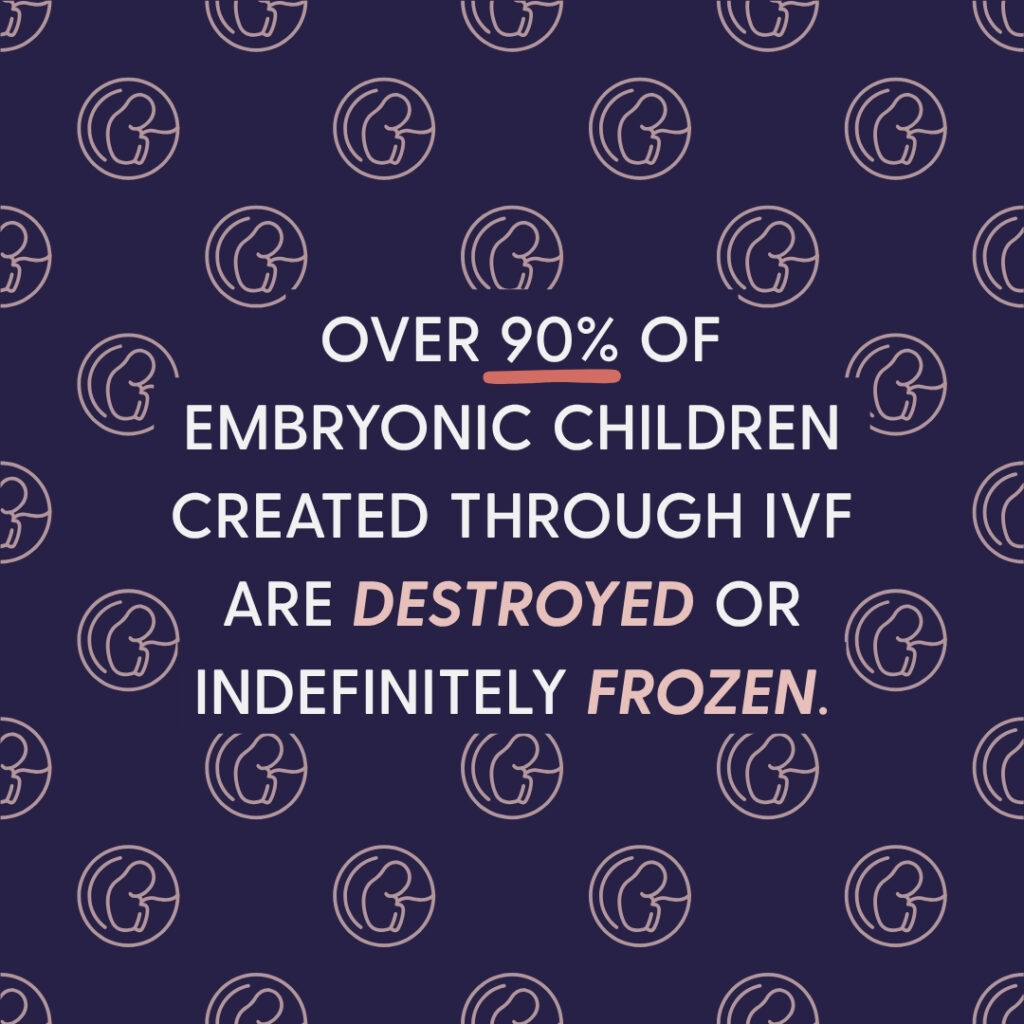
Child Trafficking and IVF
The premise of IVF in general is a hot topic of conversation in the pro-life hemisphere. Couples want children, and IVF poses a possible way to achieve that desire. But the ethical concerns associated with the practice blur the line between the honorable desire and child trafficking. For starters, it can cost more than $61,000 to achieve a live birth via IVF, depending on the number of implantations. In standard IVF practice, doctors often create multiple embryos to increase the likelihood of a successful implantation, leaving couples to decide whether to implant, freeze, or discard the remaining embryos.
Preimplantation genetic testing (PGT), offered by about 75% of fertility clinics, allows doctors to screen embryos for hereditary conditions and genetic abnormalities, enabling couples to select embryos with preferred characteristics and discard the rest. Sex selection is also offered by 73% of clinics, meaning doctors can see what gender the child will be and base their transfer selection on that information. Some companies even screen embryos for physical characteristics like height and eye color.
Given all this information, one should ask: Would creating a baby only with desirable traits and paying a large sum of money to do so fall under the child trafficking category? Is big fertility essentially selling babies?
The risks that IVF poses to both preborn children and parents should be of heavy consideration as well. Additionally, selecting embryos based on parental desire is synonymous with eugenics and exploits the lives of preborn children.
It is also worth noting that because female eggs are harder to obtain than sperm, there are actual trafficking rings that operate solely for the purpose of exploiting women’s reproductive systems. In the country of Georgia, for example, three Thai women were recently rescued from a “human egg farm,” where they were kept in group homes and injected with hormones to stimulate egg production. Those eggs are then extracted from their ovaries and sold on the black market. This story calls for serious consideration on the regulations and ethics surrounding big fertility.
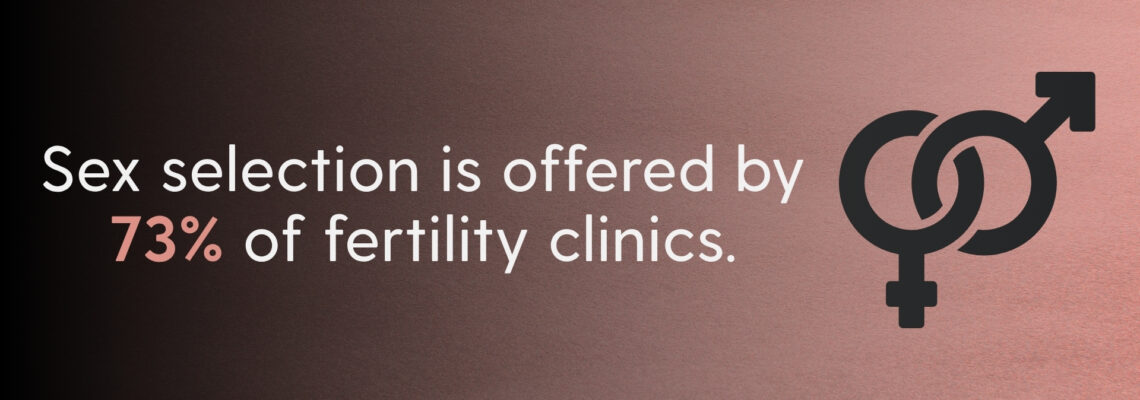
Big Fertility: What is Surrogacy?
Another ethically questionable process is surrogacy: a contractual arrangement in which one woman carries and births a child, who is then given to another individual or couple and placed under their legal parental status. This is most commonly achieved via in vitro fertilization, where an embryo is created with the couple’s DNA or a donor’s DNA, then implanted into another woman’s uterus with no direct genetic relation. The surrogate is often not the genetic mother of the child; rather, she is simply a host that grows and delivers the baby, then relinquishes the child to the prospective parents.
Human Trafficking and Surrogacy
While helping couples struggling with infertility conceive a child via surrogacy may sound morally honorable, surrogacy does possess profound complexities for both the surrogate and the child. First, surrogacy commodifies a woman’s womb, whether consensual or not. Couples pay women to host children, deliver them, and then immediately separate them after birth. Based on the chemical and maternal bond created when a child is in the womb, this process can be extremely emotionally difficult for surrogate mothers who are separated from the baby. In fact, surrogates in the U.S. usually receive $25,000+ in compensation for “pain and suffering” associated with the process. It is essentially paying to use the body of another woman for the purpose of her reproductive system, easily falling into the realm of human trafficking.
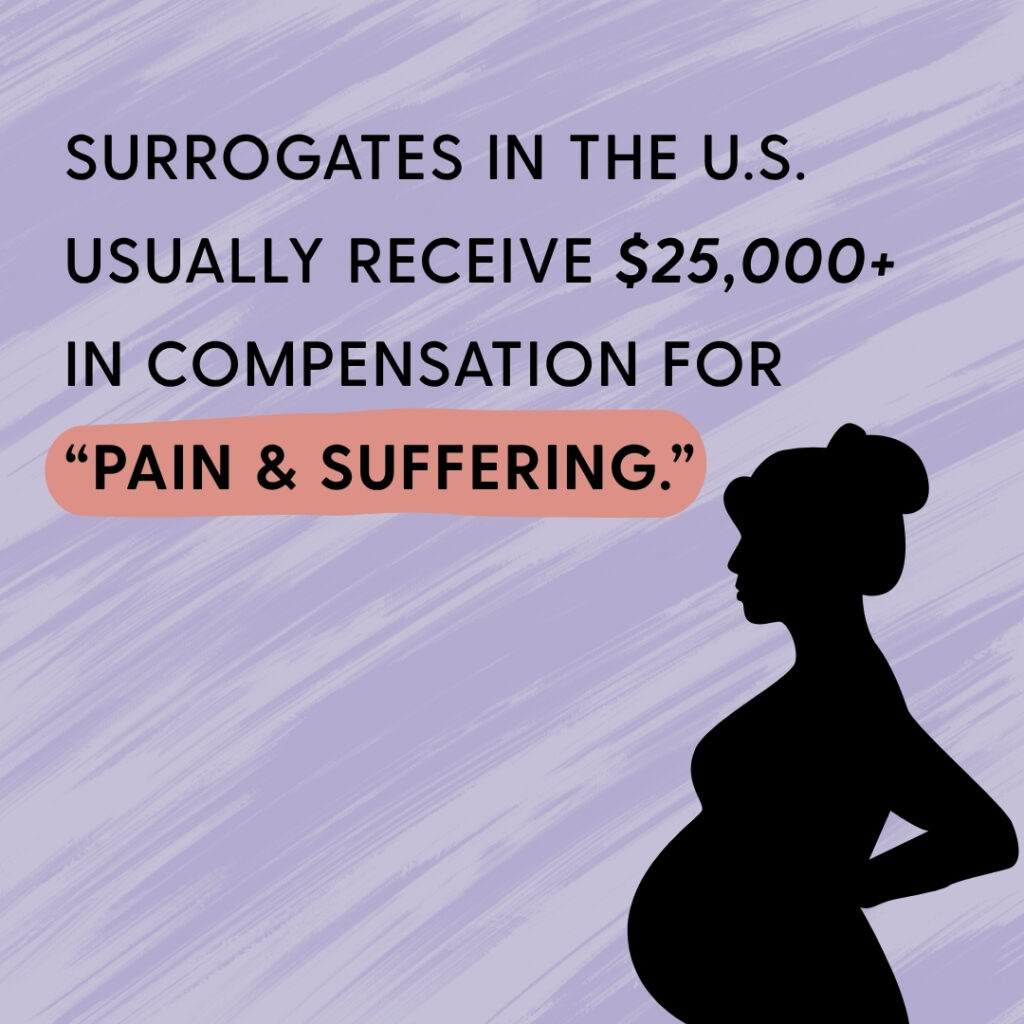
There are also class and systematic advantages within the realm of surrogacy. Women often go into being surrogates due to desperate financial situations, not because they want to. In fact, the Center for Bioethics and Culture Network found that 50% of U.S. surrogates are military wives—often younger, lower-income, rural, and Christian—while intended parents are typically older, wealthy, urban, and well-educated.
Child trafficking and Surrogacy
The trafficking of surrogacy is not limited to the surrogate, which may be under the age of 18 in some countries, but children are also commodified in the process. The idea that a baby is immediately separated from the only relationship it knows and handed off to prospective parents is concerning. Within hours after birth, studies have shown that babies have a preference and physiological reaction to the voice of their birth mother’s. To be separated from that and handed to strangers, even if they are the genetic parents, is disturbing for a child and can cause adjustment disorders.
As previously mentioned, socioeconomical status and poverty levels also play a large role in big fertility via surrogacy. In fact, surrogacy has become a transnational market, resembling patterns seen in other industries where wealthier nations drive demand and poorer countries supply the labor. While some counties restrict or ban surrogacy, developing nations with high fertility rates become “surrogacy paradises,” and have little to no surrogacy regulations, making them a hub for reproductive exploitation.
In Ukraine, for example, the poorly regulated surrogacy industry dominates the global market and has documented cases of forced surrogacy and illegal adoptions, putting children and financially vulnerable women at risk of exploitation. “Baby factories” have even been created in Nigeria in which young girls are kidnapped, raped until impregnated, then their children are placed for sale on the illegal adoption market. This is a form of child trafficking for both the victims of forced surrogacy and children sold to prospective parents.
The legalities of surrogacy cause issues as well. The couple with parental rights over the child can make all the calls, even if they are in direct contradiction with the surrogates’ beliefs. “Abortion clauses,” for example, is a type of surrogacy contract in which the “product,” i.e. the preborn child or children, can be killed via abortion if he or she does not meet the qualities or standards that the prospective parents desire. Generally, the surrogate mother has some control over the decision to abort, but she could also face legal and financial repercussions if she and the intended parents disagree. Some surrogates have even been offered additional compensation for abortion, which notably occurred with Crystal Kelley: a surrogate mother who was offered $10,000 to abort after finding out that the baby she was carrying for another couple would have serious birth defects.
Conclusion
While child trafficking includes child labor and sex trafficking, the term also encompasses the very prevalent exploitative utilization of aborted fetuses and some of the ethically corrupt practices of big fertility. No matter where you stand in the pro-life vs. pro-choice debate, we can all agree that consent matters—and no one should be used for purposes they did not agree to. Children, born and preborn, should especially be protected from practices that commodify their bodies. All in all, there is no research, science, or product that could ever justify putting a price on life.










